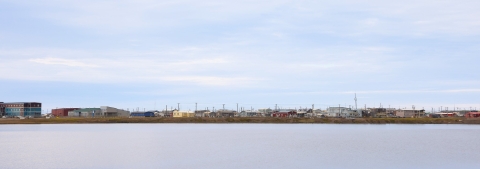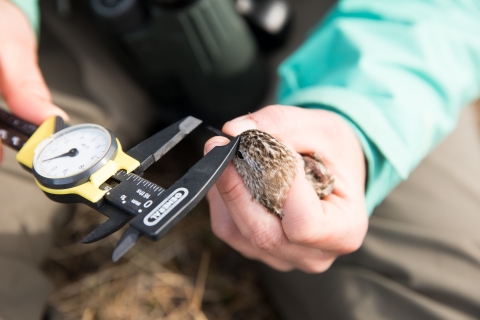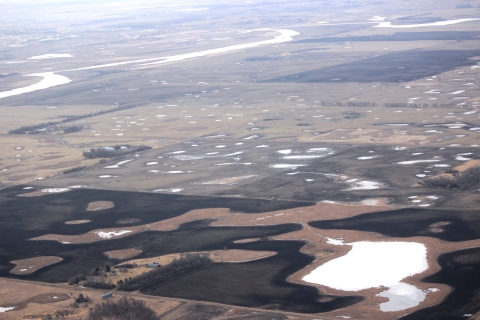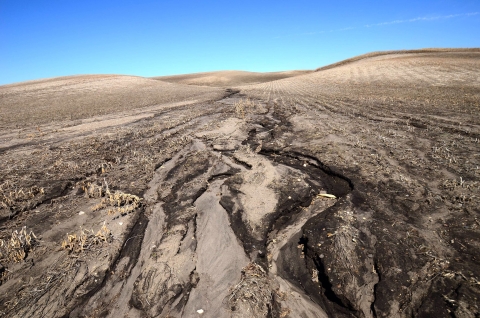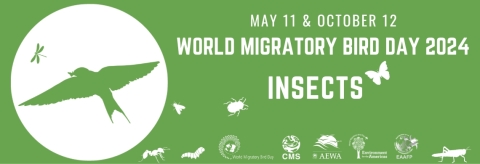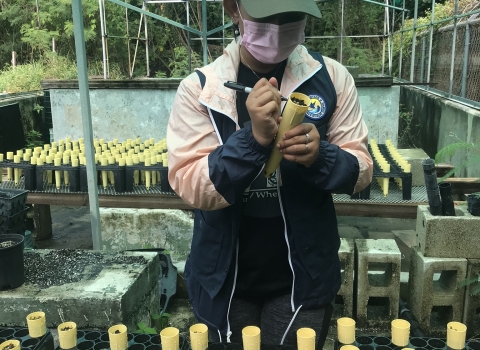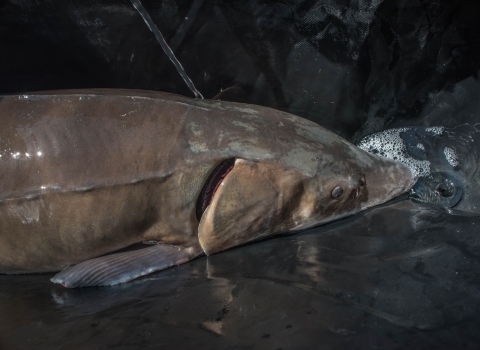Shorebirds are probably not the first group of birds that come to mind when thinking of ‘insectivorous birds’. Just like the more recognizable aerial insectivores—flycatchers, swallows, and swifts—many shorebirds also rely on insects to provide their basic energy needs. This is especially true while they complete their impressive long-distance migrations and when chicks are growing rapidly, transitioning from vulnerable flightless young to winged acrobats of the air.
Rick Lanctot and Sarah Saalfeld, two shorebird biologists with the Alaska Migratory Bird office in Anchorage, have been studying arctic-breeding shorebirds for years at their main field site in Utqiagvik, Alaska, which is located within the current and ancestral homelands of the Iñupiat peoples. The focus of their study is to understand what factors limit the size of breeding shorebird populations. Environmental factors like timing of snow melt, seasonal temperatures, amount of predators, and insect abundance can impact the survival of adult birds, how many nests hatch, and how well chicks grow and survive within a population.
The Semipalmated Sandpiper, a 2024 World Migratory Bird Day featured species, breeds throughout the Alaskan and Canadian Arctic. It's listed as ‘Near Threatened’ by the Global IUCN Red List, and its central and eastern populations are listed as U.S. Fish and Wildlife Birds of Conservation Concern, a designation representing the service’s highest bird conservation priorities outside of species listed by the Endangered Species Act.
The Semipalmated Sandpiper is also a focal species of Lanctot and Saalfeld’s Arctic shorebird research. Countless hours of fieldwork looking for and monitoring nests, capturing adults and chicks, while simultaneously monitoring ecological conditions, like insect emergence, have led to important discoveries about the species’ ability, or rather inability, to adapt to a warming arctic.
“There appears to be a long-term trend, with lots of interannual variation, toward earlier, warmer, and longer summers in Utqiaġvik”, says Lanctot.
This variability in the summer breeding season has made it difficult for long-distant migratory shorebirds like the Semipalmated Sandpiper. The start of these birds’ northward migrations is relatively fixed, based mainly on the amount of daylight, limiting when birds can reach their arctic breeding grounds. Meanwhile, spring air temperatures and snow melt in the Arctic are generally getting earlier and by association so too is the timing of insect emergence.
“In years when spring arrives exceptionally early, shorebirds arrive late to the party, and a mismatch happens between peak insect emergence and shorebird nests hatching. Our research has shown that chicks hatching after peak insect emergence have lower growth and survival”, Saalfeld explains.
Adult arctic-breeding shorebirds rely on insects to replenish their energy reserves after a long migration and to lay eggs. Newly hatched chicks are even more dependent on insects as they feed themselves, growing from small puff balls to winged adults in about 2-4 weeks. Lanctot and Saalfeld’s long-term data in Utqiaġvik points to some species able to nest slightly earlier, but no species has shown the ability to keep pace with advancing snowmelt, further revealing how long-term climatic changes will impact shorebirds.
It’s not just the breeding grounds where insects play an important role in Semipalmated Sandpiper survival. A large-scale, collaborative study that tracked Semipalmated Sandpiper movements using very small tracking devices, revealed important areas these birds rely on during migration and winter.
The prairie pothole region, an expanse of shallow lakes and marshes stretching from Iowa to northwest Alberta, is famous for its importance to ducks, but it is also extremely important to many migratory shorebird species, like the Semipalmated Sandpiper. They utilize this region during both fall and spring migration, staying for about a week, as they refuel to continue their impressive journeys south to central and northern South America and north back to the Arctic.
More than half of the prairie pothole region has been drained for farming. Agrochemical contamination is a real concern in the remaining wetlands, with widespread detection of neonicotinoid insecticides throughout the region. Neonicotinoids are one of the most widely used insecticides. Applied as coatings on crop seeds, they are incorporated into the plant as they grow. Studies have found that the chemicals can stay in the soil, leeching into adjacent wetlands.
New research on neonicotinoid contamination in shorebirds in the prairie pothole region found that Semipalmated Sandpipers had some of the highest levels, along with Killdeer and Lesser Yellowlegs. It’s not yet known if these levels affect birds’ health, but studies have shown neonicotinoids can suppress birds’ appetites, which is critical during these refueling stopovers. The chemicals may also reduce the amount of insect prey available to shorebirds, yet another potential threat to this already at-risk group of birds.
The decline and disturbance in insect populations across the flyways compounds the threat to birds’ existence and overall welfare. To preserve the delicate balance between birds and insects, it is crucial to take proactive and effective conservation measures. A range of strategies can safeguard these vital components of our ecosystems.
How You Can Help
This World Migratory Bird Day, each of us can play a role in safeguarding our insects for the benefit of birds. Browse this list of actions and learn how you can “Protect Insects, Protect Birds.”
Leave the leaves. Create a thriving ecosystem for insects and birds by leaving leaves in your garden or yard. The leaf litter acts as a natural shelter, food source, and breeding ground for various insect species. The decaying leaves also attract insects that are essential for insectivorous birds’ diets, promoting biodiversity and ecological balance. By refraining from raking leaves, you contribute to a healthier and more sustainable environment for both insects and birds.
Pesticide Alternatives. Stop using pesticides and herbicides, which kill or harm insects - including pollinators like butterflies, birds, and the plants that many insects and other wildlife rely on for food. Alternatively, opt for organic products, targeted application, or integrated pest management systems that minimize negative impacts to insect populations and the birds and other species that depend on them.
Convert your lawn or part of your lawn. (which has limited value for insect production) to a native plant garden. Aiming for 70% native plants is a good rule of thumb to benefit pollinators and other beneficial insects. Less lawn means less mowing with both time and money saved. A win-win for you and for wildlife!
Supports pollinator-friendly initiatives. Advocate for and support local policies and initiatives that protect insects and their habitats.
Maintain and/or restore grassland ecosystems. Shorebirds migrating through the central U.S. rely on flooded fields for fuel and rest. If you or your family farms, encourage them to diversity crops, practice crop rotation, and employ organic farming techniques to reduce pesticide and herbicide treatments.
Maintain and/or restore water bodies. Clean water is essential to protect insectivorous aquatic communities and is also important for many waterbird species including shorebirds.
Choose Bird Friendly certified coffee and chocolate. Over 40% of the world’s coffee is farmed in full sun, despite coffee’s ability to thrive under a forest canopy. Bird Friendly certified coffee and cocoa ensures these plants are grown with a mix of foliage cover, tree height, and biodiversity creating quality habitat for birds and other wildlife. Bird Friendly coffee and cocoa is also organic! Look for the official "Bird Friendly" certification logo to know you’re getting coffee and chocolate that adheres to research-backed standards that conserve habitat and protect migratory birds.


